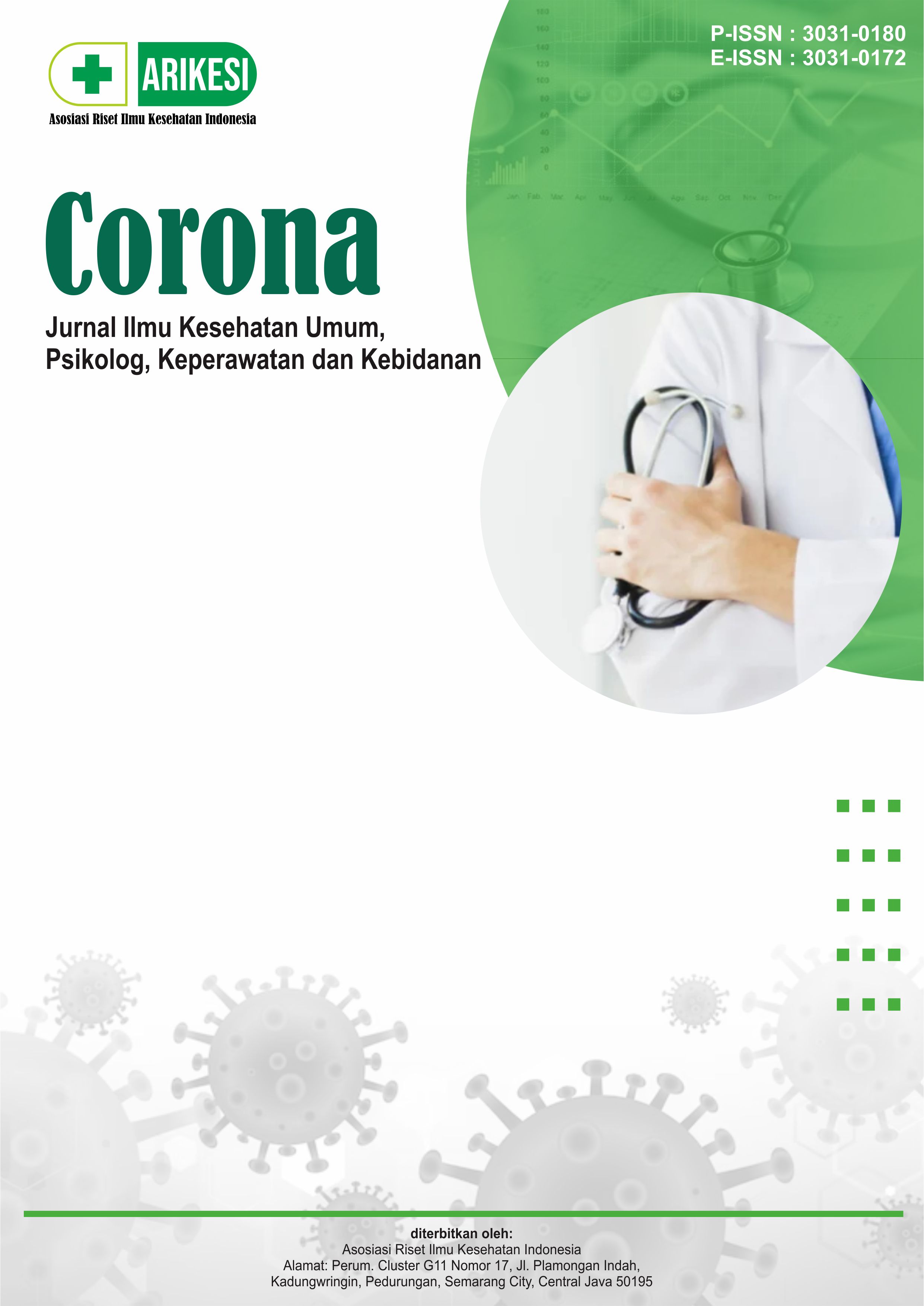The Relationship of Physical Activity with Restless Legs Syndrome in Chronic Kidney Disease Patients in the Hemodialysis Room of Subang District Hospital
DOI:
https://doi.org/10.61132/corona.v2i3.616Keywords:
Physical Activity, Restless Legs Syndrome, Chronic Kidney DiseaseAbstract
Restless legs syndrome (RLS) is a sensorimotor disorder that affects a person's desire to move the legs. Physical activity is considered to be one way to reduce RLS symptoms. The purpose of this study was to analyze the relationship of physical activity with RLS in patients with chronic kidney disease (CKD) in the hemodialysis room of RSUD Kab Subang. This research is a type of quantitative research, correlational descriptive research design using cross-sectional. The sample in this study was 62 respondents, with purposive sampling techniques. Data collection using the Global Physical Activity Questionaire (GPAQ) and International Restless Legs Syndrome Group (IRLS) questionnaires, and data analysis using the spearmen rank test. The results showed that most respondents had a low level of physical activity, with a prevalence of 64.5%, and most respondents experienced severe symptoms of RLS, with a prevalence of 40.3%. Statistical tests show that there is a relationship between the physical activity variable and RLS (p-value 0.001), with the coefficient value is -0.741. It can be concluded that there is a solid relationship between physical activity and RLS in CKD patients in the hemodialysis room of RSUD Kab Subang with an antagonistic relationship direction. It is expected that nurses can intervene in chronic kidney disease patients to perform physical activity in accordance with their ability to reduce RLS.
Downloads
References
Anggriyani, et al. (2019). Kualitas hidup pasien gagal ginjal kronis yang menjalani hemodialisis di RSUD Blambangan Banyuwangi. In Digital Repository Universitas Jember.
Aukerman, M. M., et al. (2019). Exercise and restless leg syndrome: A randomized controlled trial. Journal of Clinical Sleep Medicine, 15(4), 487-493.
Dandi. (2021). Level aktivitas fisik dimasa pandemi COVID-19 pada siswa SMP Negeri 8 Palu.
Dzulfachri, et al. (2020). Faktor-faktor yang berhubungan dengan kejadian restless legs syndrome (RLS) pada pasien gagal ginjal kronik (GGK) di ruang hemodialisa Rumah Sakit Palang Merah Indonesia Kota Bogor. Fakultas Ilmu Keperawatan Universitas Muhammadiyah Jakarta.
Filipcic, I., et al. (2021). Physical activity and quality of life in hemodialysis patients and healthy controls. International Journal of Environmental Research and Public Health, 18(4), 1-10.
Liu, Y., et al. (2022). Exploration of restless legs syndrome under the new concept.
Nurhusna, et al. (2021). Analisis determinan faktor yang berhubungan dengan restless legs syndrome pada penderita chronic kidney disease end stage di RSUD Raden Mattaher Jambi.
Painter, P., et al. (2019). Exercise: A guide for people on dialysis. Medical Education Institute, Inc.
Rosiah, C. H. (2020). Studi fenomenologi perencanaan klien hemodialisis dalam mempertahankan kemampuan aktivitas fisik. Jurnal Ilmiah Ilmu dan Teknologi Rekayasa, 2(1), 51-58.
World Health Organization. (2020). Physical activity.
Yang, et al. (2019). Hubungan antara kepatuhan. Dinamika Kesehatan, 9(2), 340.
Yusuf. (2018). Hubungan derajat aktivitas fisik pada laki-laki dengan kejadian stroke iskemik di RSUD Dr Moeswardi Surakarta (Skripsi). Fakultas Kedokteran, Universitas Sebelas Maret.
Downloads
Published
How to Cite
Issue
Section
License
Copyright (c) 2024 Corona: Jurnal Ilmu Kesehatan Umum, Psikolog, Keperawatan dan Kebidanan

This work is licensed under a Creative Commons Attribution-ShareAlike 4.0 International License.





